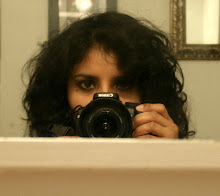On Using Your Imagination

Ammachi, May 2010
I usually don't write on this blog (it was created and is still meant to be a photo blog). But a discussion I had last week on Facebook with a friend and his two photo-enthusiast friends got me thinking about how often I am approached about the quality of my photography. (I'm not bragging.)
I'm usually asked these questions:
- "Which lens?"
- "Which camera?"
- "Do you use Photoshop?"
All these queries really probe for this: "What tools do you use?"
I started actively photographing more than two years ago when I bought a Canon Digital Rebel xTi. I use the following lenses: The 18-55 mm/3.5-5.6 and the 50 mm/1.8.
I often think about the creative process. I know from my experience that no amount of money -- nor any tool -- will make better photos. Rather, it starts with having an "eye", that intuitive ability to create an aesthetically pleasing balance of shapes, lines and colors. A "good eye" also is the judicious ability to determine what needs to be left out of the frame. (Whether we're graphic designers, web designers, illustrators, painters or photographers, we're working within a box.) You also need to critically think, effectively solve problems, be discerning and engage your subjects.
I never studied photography in a formal setting, I don't teach it and I rarely socialize with other photographers (No, I'm not a hermit.). How I've learned to do what I do is from photographing, looking at others' work through their Web sites, and analyzing their portfolios, looking for elements that effectively tell a story. (I'll soon compile a list of links to my favorite photographers' sites.) I had briefly discussed this issue in my June 2009 post, An Old-Fashioned Education in Seeing.
Tools will always become "technically" better; faster lenses, better weatherproofing, more megapixels and even shorter F-stops will continue to be created. That's the evolution of technology. It helps support human expression in its various forms, but it doesn't foster it. That work is left to humans.
Here's an example: Shakespeare used a writing utensil (I'm guessing a feather pen). If someone who aspired to write plays had asked Shakespeare from which type of bird the feather came, I speculate he would have laughed. Instead, in order to create his works, he accessed something that couldn't -- and still cannot -- be quantified: His imagination.
So, here are better questions to ask when you photograph:
- What is the story? That can be translated as: Why did this subject capture my attention?
- What kinds of strategies do other photographers use to create dynamic images?
- How do I access my imagination to think of better ways to approach my subject?
Gaining access to your imagination is another post itself. Please let me know your thoughts.
Labels: creative process, photography


1 Comments:
Thank you for this post! It definitely made me think about myself as a photographer. I often discredit myself when people compliment my photography. I'll say something like, "Oh, it's just my fancy lens," if I'm using my 50mm/1.4, or, "I just got lucky." No matter what camera or lens I'm using, I'm the one who saw potential in whatever it was that I chose to photograph. All the tools in the world won't make crappy subject matter look good. Thank you for reminding me of that. I absolutely love the Shakespeare analogy, by the way.
Post a Comment
Subscribe to Post Comments [Atom]
<< Home